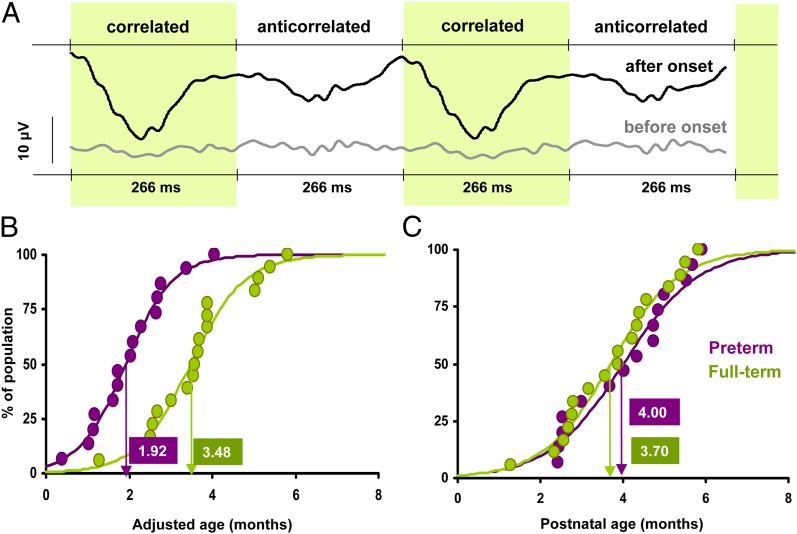Fig. 2.
Results of the DRDC-VEP experiment. (A) Representative averaged DRDC-evoked VEP responses. VEPs could not be evoked before the onset of binocular function; there is no specific response for the repeating correlated and anticorrelated phases of the stimulus. After the onset, however, VEP responses are phase locked to the DRDC stimulation frequency, which can be detected by T2circ statistic mostly in the second harmonic component (see SI Text). (B) Cumulative distribution of the onset times of DRDC evoked VEP responses in preterm (violet coloring) and full-term (green coloring) infants on an adjusted age scale. Dots represent the percentage of the population presenting DRDC response at a particular age, with a logistic curve fitting (see SI Text for curve-fitting details). Onset age of each population is estimated by the age at which 50% of the infants are responding to DRDCs. The preterm population has an earlier onset on this scale. (C) Data represented on a PNA scale. Estimated onset age is alike for preterm and full-term infants. This pattern of results clearly indicates experience-dependent development of cortical binocularity.

